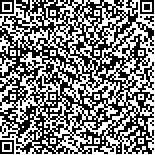李向哲,丁洁,方露,等.阻断BDNF-TrkB通路后运动训练对脊髓损伤大鼠痉挛状态及KCC2表达的影响[J].中华物理医学与康复杂志,2020,42(7):588-593
扫码阅读全文

|
| 阻断BDNF-TrkB通路后运动训练对脊髓损伤大鼠痉挛状态及KCC2表达的影响 |
|
| |
| DOI:10.3760/cma.j.issn.0254-1424.2020.07.003 |
| 中文关键词: 脊髓损伤 减重平板训练 痉挛状态 脑源性神经营养因子 钾-氯协同转运蛋白2 |
| 英文关键词: Spinal cord injury Treadmill training Spasticity Brain-derived neurotrophic factors Potassium chloride co-transporter 2 |
| 基金项目:国家自然科学基金面上项目(81672258);苏州市科学技术局民生科技项目(SYS201785);苏州市“科教兴卫”青年科技项目(KJXW2018082) |
|
| 摘要点击次数: 5388 |
| 全文下载次数: 6049 |
| 中文摘要: |
| 目的 探讨阻断脑源性神经营养因子(BDNF)-酪氨酸激酶受体B(TrkB)通路后运动训练对脊髓损伤(SCI)大鼠痉挛状态及钾-氯协同转运蛋白2(KCC2)表达的影响。 方法 将40只雌性 SD大鼠按随机数字表法分为假手术组(Sham组)、SCI+磷酸盐缓冲液组(SCI/PBS组)、SCI-运动训练+PBS组(SCI-TT/PBS组)、SCI/TrkB-IgG组和SCI-TT/TrkB-IgG组。于SCI前1周对所有大鼠进行鞘内置管,置管1周后制作T10不完全SCI大鼠模型,Sham组仅暴露脊髓。于SCI制模术后第 7天,使用TrkB-IgG阻断SCI/TrkB-IgG和SCI-TT/TrkB-IgG组的BDNF-TrkB信号通路,其余三组使用PBS进行对照。SCI后第8天,SCI-TT/PBS组和 SCI-TT/TrkB-IgG组进行4周的减重平板训练。使用Asworth评定法和H反射(H-max/M-max比值)评估大鼠后肢的痉挛状态。实验结束后采用 Western Blot和免疫组化技术检测各组大鼠损伤远段脊髓 KCC2的表达情况。 结果 SCI后1~5周,4组SCI大鼠的Ashworth痉挛分级均较Sham组增加。SCI后3~5周,SCI-TT/PBS组Ashworth痉挛分级明显小于SCI/PBS组和SCI/TrkB-IgG组(P<0.05);SCI后第5周,SCI-TT/PBS组Ashworth痉挛分级小于SCI-TT/TrkB-IgG组(P<0.05);SCI后1~5周,Sham组H-max/M-max比值保持不变,均低于4组SCI大鼠(P<0.05)。SCI后第1周和第2周,4组SCI大鼠H-max/M-max比值差异无统计学意义(P>0.05)。SCI后3~5周,SCI-TT/PBS组H-max/M-max比值明显低于SCI/PBS组、SCI/TrkB-IgG组和SCI-TT/TrkB-IgG组(P<0.05)。SCI后4~5周,SCI-TT/TrkB-IgG组H-max/M-max比值明显低于SCI/TrkB-IgG组(P<0.05)。KCC2免疫组化及Western Blot结果显示,SCI 5周后,4组SCI大鼠的损伤远端脊髓前角KCC2的表达量较Sham组明显减少(P<0.05)。运动训练可明显增加SCI-TT/PBS组KCC2的表达量,其免疫强度和相对光密度值均高于SCI/PBS组、SCI/TrkB-IgG组和SCI-TT/TrkB-IgG组(P<0.05)。而SCI/TrkB-IgG组与SCI-TT/TrkB-IgG组差异无统计学意义(P>0.05)。 结论 减重平板训练可通过BDNF-TrkB信号通路改善 SCI大鼠的痉挛状态并促进损伤远端脊髓内KCC2的表达。 |
| 英文摘要: |
| Objective To investigate the effect of treadmill training on spasticity and the expression of potassium chloride co-transporter 2 (KCC2) after blocking BDNF-TrkB signaling pathway in rats with incomplete spinal cord injury (SCI). Methods Forty female Sprague-Dawley rats were randomly divided into a sham-operation group (Sham group), an SCI+phosphate-buffered saline group (SCI/PBS group), an SCI-treadmill training+PBS group (SCI-TT/PBS group), an SCI/TrkB-IgG group and an SCI-TT/TrkB-IgG group. All of the rats underwent 1 week of intrathecal catheterization, and then T10 incomplete SCI was induced. In the Sham group the spinal cord was only exposed. Seven days later, BDNF-TrkB signaling was blocked in the SCI/TrkB-IgG and SCI-TT/TrkB-IgG groups using the TrkB-IgG. The remaining three groups were controls treated with PBS. The SCI-TT/PBS and SCI-TT/TrkB-IgG groups began exercising 7 days after the SCI and continued for 4 weeks. The spasticity in their hind limbs was assessed using the Asworth assessment and H reflex (H-max/M-max ratio). The expression of KCC2 in the distal spinal cord was detected using western blotting and immunohistochemistry. Results After the SCI the average Ashworth spasticity grades of the four SCI groups increased significantly compared with the Sham group. The average Ashworth spasticity grade of the SCI-TT/PBS group was significantly lower than those of the SCI/PBS and SCI/TrkB-IgG groups in the 3rd through the 5th week, and the SCI-TT/PBS group′s average grade was significantly less than that of the SCI-TT/TrkB-IgG group after 4 weeks. Within 5 weeks the average H-max/M-max ratio of the Sham group remained unchanged, significantly lower than the other 4 groups′ averages. There was no significant difference in the H-max/M-max ratio among the 4 groups of injured rats within 2 weeks after the SCI, but after 3-5 weeks the average H-max/M-max ratio of the SCI-TT/PBS group was significantly lower than those of the SCI/PBS, SCI/TrkB-IgG and SCI-TT/TrkB-IgG groups. At the 4th and 5th week the average H-max/M-max ratio in the SCI-TT/TrkB-IgG group was significantly lower than that in the SCITrkB-IgG group. And after 5 weeks the average expression of KCC2 in the anterior horn of the injured spinal cord was significantly lower in the 4 SCI groups than in the Sham group. Exercise significantly increased the expression of KCC2 in the SCI-TT/PBS group, and its immune intensity and relative optical density were significantly higher than those in the SCI/PBS, SCI/TrkB-IgG and SCI-TT/TrkB-IgG groups. However, there was no significant difference between the SCI/TrkB-IgG group and the SCI-TT/TrkB-IgG group. Conclusions Treadmill training can improve spasticity after incomplete SCI and the expression of KCC2 in the distal spinal cord, at least in rats. |
|
查看全文
查看/发表评论 下载PDF阅读器 |
| 关闭 |